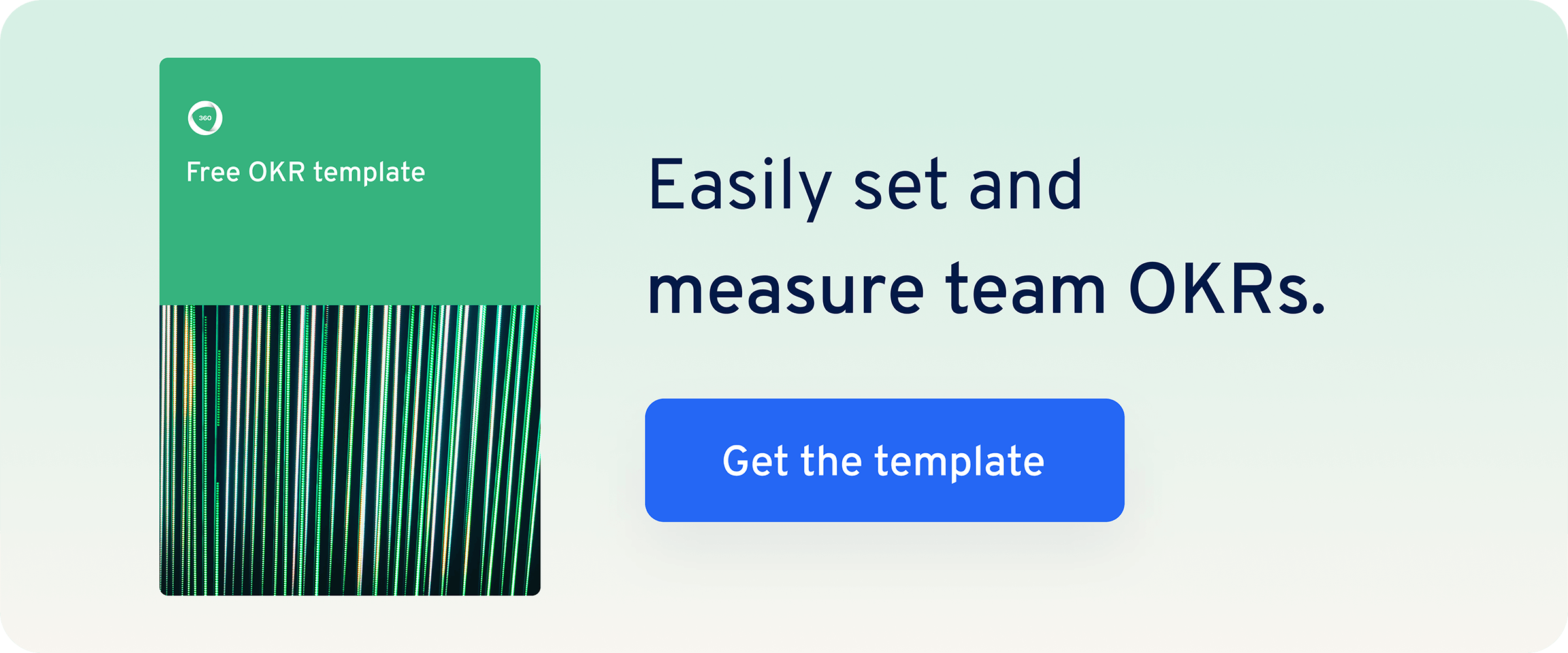15+ Performance Management Templates
According to a recent study, performance management is a sore spot for many businesses.
McKinsey found that 54% of surveyed companies say their current employee review process hasn’t positively impacted performance. If your company is part of this majority, it may be time for an overhaul. Switching to a performance management cycle could be the solution you’ve been looking for.
The performance management cycle is an ongoing model for reviewing employees’ skill sets and growth toward established goals. In this article, we’ve rounded up a collection of tips and templates for each step in the performance management cycle. Use these resources to structure your own performance management process to build a cohesive, effective plan that will resonate with your employees.
Plan: Goal-setting templates
The first step in the performance management cycle is planning, which involves collaborating with employees to create actionable goals they’ll work toward throughout the rest of the cycle. It’s a critical first step because establishing a step-by-step plan was the number one most important step in achieving goals, according to a 2020 survey by Doist. Using a template during goal-setting sessions gives you that scaffolding to create a plan and helps guide your discussion.
Tips for setting effective goals:
- Make sure all goals are SMART: Specific, Measurable, Achievable, Relevant, and Time-Bound.
- Use the same format for all employee goals. This gives managers a consistent framework to use for all reviews.
- Remember that goal setting should start with a collaborative two-way conversation between employee and manager. Employees will be more motivated when they get input in the goal-setting process.
- Help employees tie their individual goals into the larger company vision. Showing them where they fit in the bigger picture increases accountability, transparency, and engagement.
These templates can help you set goals with employees:
- University of San Diego’s SMART goal setting template
- Quantum Workplace’s goal-setting conversation guide
- Positive Psychology’s GROW model (goal, reality, options, way forward) worksheets
- Smartsheet’s goal setting template roundup
- 360Learning’s OKR template:
Goals should be individualized, but it can be challenging to come up with goals from scratch. Consider sharing one (or many) of these templates with your employees in order to help them conceptualize what actionable goals can look like. From there, you and your employee are free to tailor goals according to unique individual and company needs.
Monitor: Performance improvement plan and check-in templates
One of the key differences between the performance management cycle and traditional reviews is constant monitoring.
Instead of meeting with employees once a year to review 12 months of progress (or lack thereof), you check in frequently (quarterly at a minimum, bi-weekly ideally). A popular monitoring model is to have a quick, 15-minute check-in with employees every two weeks, with slightly more structured quarterly meetings. These regular check-ins help keep employees engaged and accountable and give you an opportunity to update goals to match your organization’s changing needs.
During these check-ins, it might become clear that employees need additional support in order to meet their goals or even perform at an acceptable level. That’s where performance improvement plans (PIPs) come in. A performance improvement plan is a structured approach to helping an employee address deficiencies and, ultimately, improve.
Tips for monitoring and improving performance:
- Set mini-goals and internal deadlines at each check-in to help employees chip away at larger goals in manageable chunks.
- Use these check-ins to revise or change goals that no longer align with the employee’s growth or the company’s needs.
- Implement PIPs to improve employee performance, not just as a precursor to firing.
These templates can help guide your performance improvement check-ins:
- Startup HR toolkit’s performance improvement plan template
- PeopleGoal’s mid-year “Start, Stop, Continue” performance review template and 1-to-1 meeting guide
- Quantum Workplace’s 1-to-1 check-in template
- Reflektive’s employee check-in question templates
- 360Learning’s performance improvement plan template
Depending on your check-in cadence and the nature of your goals, you may be able to use the same template for bi-weekly check-ins as quarterly check-ins. In other cases, you may need a different template for each one.
Review: Performance review templates
The year-end review is an opportunity for both employees and managers to reflect on their growth and performance over the course of the performance management cycle.
Similar to traditional annual reviews, this more formal meeting serves as a final “lessons learned” to wrap up the cycle. It’s an opportunity for candid big-picture feedback for both the employee and the manager. Reviewing how the year’s goals were met or not met also informs the planning step of the next year’s performance management cycle.
Tips for reviewing employee performance:
- Have employees do a self-evaluation in advance of the meeting and use this evaluation as a comparison point for your evaluation of them.
- Encourage a two-way review process, with employees evaluating their managers in advance of the meeting, too.
- Use the performance review meeting to discuss areas of continued improvement and celebrate wins. The evaluation of how this cycle went can serve as a jumping-off point for your next planning meeting.
- Keep performance reviews separate from conversations about compensation; otherwise, employees may be preoccupied with the prospect of a raise and unable to focus on the actual content of the review. More on compensation conversations below.
These templates can help you structure your performance reviews:
- The Management Center’s performance evaluation form template
- Smartsheet’s performance review template roundup
- Grosum’s five performance review templates
- Profit.co’s three employee review templates
While the review step is the most similar to traditional employee reviews, nothing in this meeting should come as a surprise to employees because they’ve been steadily working toward it throughout the monitoring step. Strive to make reviews positive, productive, and effective, and choose a template that's easily printable, so employees can have a copy as a meeting takeaway.
Reward: Performance incentive plan templates
The last step of the performance management cycle is the most important part for employees: the reward. Incentives are the number one thing that keeps employees engaged in performance management because it’s the baseline motivation for showing up and excelling. It is a job, after all.
Tips for performance incentive programs:
- Establish what the reward/incentives will be for each employee at the beginning of the performance management cycle, be it a bonus, a raise, or additional PTO. That way, employees have motivation to complete their goals throughout the year.
- Consider running surveys to understand your particular team’s reward preferences or even offer flexible programs where employees can choose between various options. An incentive for one employee won’t necessarily resonate with another employee—rewards should be highly individualized to each employee’s desires and goals.
- While the reward at the end of the performance management cycle may be the biggest payoff, it doesn’t need to be the only one. Consider establishing smaller rewards throughout the performance management cycle, like buying your team lunch if they meet their smaller internal goals during monitoring check-ins.
These templates can help you organize your performance incentive strategy:
- Quantum Workplace’s compensation check-in template
- Workable’s employee bonus policy template
- Better Workplaces’ motivate, manage, and improve performance template
Incentive templates are a great way to clearly articulate the benefits of the performance management cycle to your employees while keeping leadership accountable and aware of the rewards. But incentives shouldn’t stop at filling out spreadsheets. Instead, check out our guide to creating a full-fledged incentive management program to keep your employees engaged and motivated.
Performance management isn’t one-size-fits-all
The point of the performance management cycle is to offer your employees a constantly evolving, personalized growth experience. While these templates are a great start, they’re just that—a starting point. Use these resources as inspiration, but don’t be afraid to tailor them to fit your company’s and employees’ ever-changing needs.



